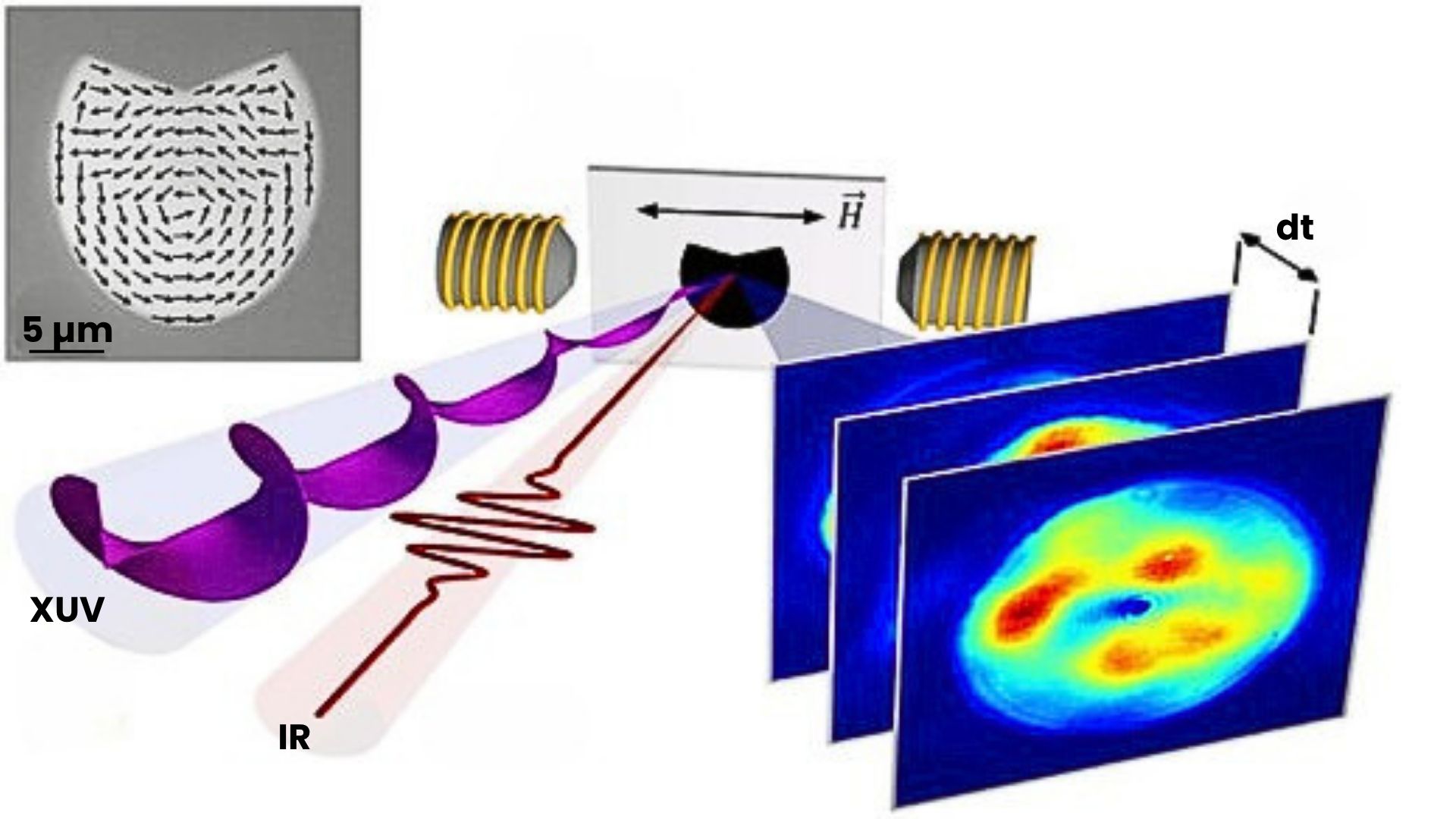Various applications in spintronics, such as sensors or magnetic memories, exploit magnetic vortices, which consist of circular distributions of magnetization. Researchers are studying the ultra-fast dynamics of these vortices to manipulate and control magnetic states on the nanometric scale.
In a magnetic material, an infrared laser pulse causes a transient loss of magnetization, triggered by a redistribution of energy between electrons, phonons and spins. However, the magnetization response of complex magnetic structures such as vortices is difficult to characterize. Researchers have implemented an innovative method to probe the vorticity of magnetization on the picosecond scale using magnetic helicoidal dichroism (MHD).
In the experiment carried out at the FERMI laboratory in Trieste (Italy), an initial femtosecond infrared laser pulse is applied to a magnetic pillar placed on a silicon substrate. This thermally excites a magnetic vortex of micrometric diameter. After a controlled delay, a second, higher-energy laser pulse (extreme UV) carrying an orbital angular momentum probes the magnetic structure. The researchers have shown that it is possible to follow the evolution of the magnetic vortex through its interaction with light using magnetic helicoidal dichroism (MHD), by reversing the direction of rotation of the vortex and then comparing the scattering of the extreme UV light.
The results reveal complex dynamics, with changes depending on the thickness of the vortex, and even a temporary inversion of the magnetization at surface. This time-resolved measurement sheds new light on the fundamental mechanisms of ultrafast dynamics, which are still poorly understood.
As part of this study, the
CEA-Irig/SPINTEC laboratory developed the samples studied and jointly carried out micromagnetic simulations to corroborate the experimental results and provide a theoretical interpretation of the observed results.

Experimental setup: in the center, a first short IR pulse excites the magnetization of the magnetic vortex in a permalloy pillar (pacman shape, shown in gray). Then, a second XUV laser pulse with orbital angular momentum probes the system. Then, an applied H magnetic field reverses the direction of rotation of the vortex magnetization. Finally, light scattering images with zones of different color between the right and left magnetic orientations determine the magnetic helicoidal dichroism signal, enabling the magnetization dynamics to be tracked.
This work demonstrates the use of time-resolved magnetic helicoidal dichroism as a new method of magnetic characterization. It opens the way to a better understanding of the physical processes associated with the writing and manipulation of magnetic information on nanometric and femtosecond space-time scales.
Collaboration
- New Technologies Research Center, University of West Bohemia, Czech Republic
- Elettra-Sincrotrone Trieste S.C.p.A, Trieste, Italy
- Department of Molecular Sciences and Nanosystems, University of Venice, Venezia, Italy
- Sorbonne Université, CNRS, Institut des NanoSciences INSP, Paris, France
- Laboratory of Quantum Optics, University of Nova Gorica, Slovenia
- PSI Center for Photon Science, Paul Scherrer Institute, Switzerland
- Synchrotron SOLEIL, Gif-sur-Yvette, France